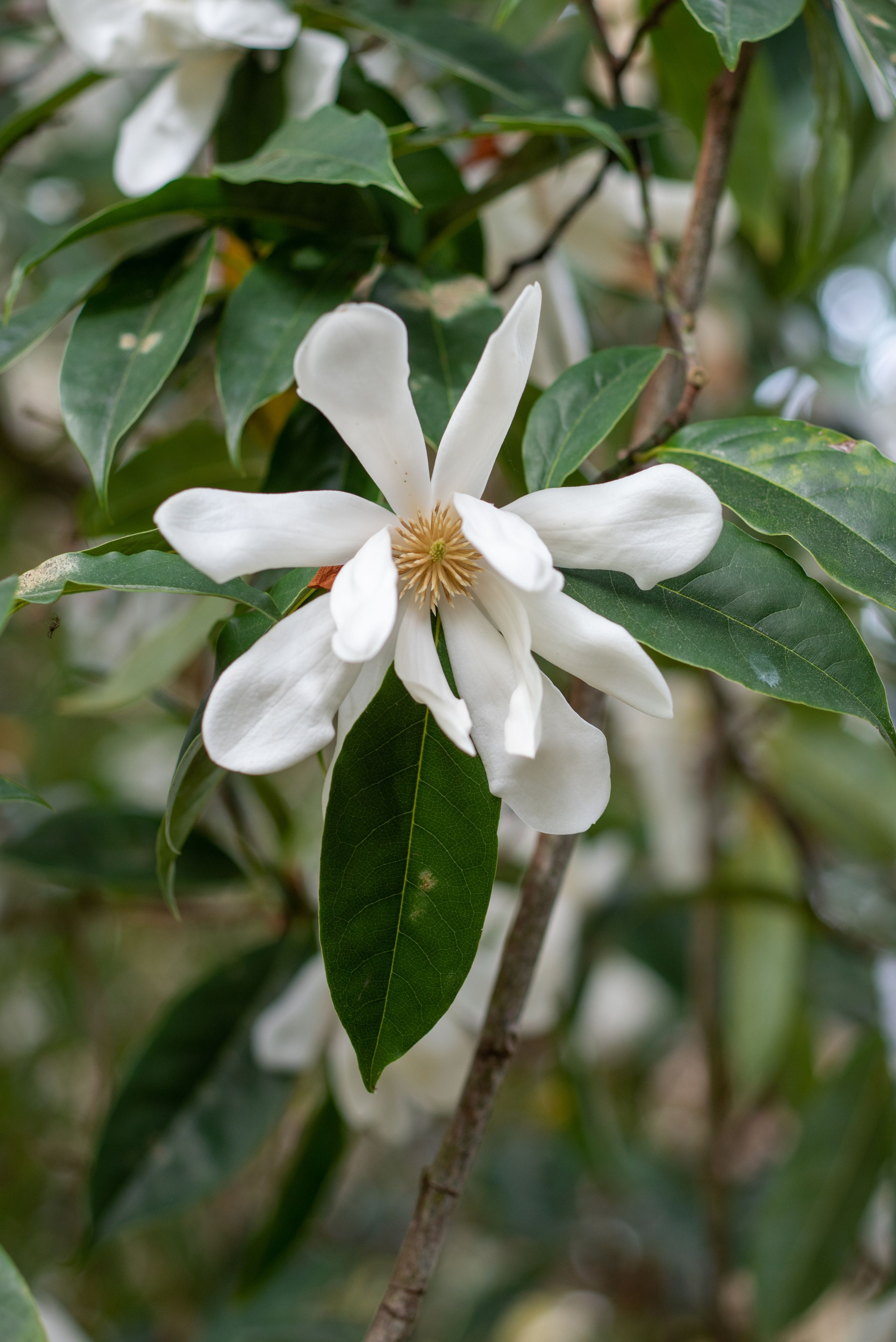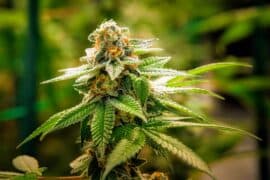Himalayan white magnolia
(Magnolia doltsopa)

Description
Magnolia doltsopa, commonly known as the Himalayan white magnolia, is a majestic flowering tree species that belongs to the Magnoliaceae family. It is a native of the eastern Himalayas, from Bhutan to southeastern Tibet, and can be found growing in forests, shrubberies, and rocky slopes at altitudes ranging from 1,500 to 3,000 meters. Description and Characteristics Magnolia doltsopa is a deciduous tree that can grow up to 25 meters in height, with a broad, pyramidal shape and a spread of about 10 meters. Its bark is smooth and grayish-brown, with shallow fissures that develop as the tree matures. The tree's branches are thick and often form a broad, spreading canopy. The leaves of Magnolia doltsopa are large and oval-shaped, measuring between 20 and 30 centimeters in length and 10 to 15 centimeters in width. They are deep green in color and have a glossy, leathery texture. The leaves are arranged alternately on the branches and have a prominent mid-vein and a network of smaller veins that give them a distinctive appearance. The tree produces large, fragrant, and showy flowers that are white or cream-colored, measuring up to 25 centimeters in diameter. The flowers have a goblet-shaped form with six to nine petals, and a central boss of stamens that adds to their ornamental value. The flowers bloom in late spring or early summer, and their sweet fragrance can be enjoyed from a distance. Magnolia doltsopa is an attractive and low-maintenance tree that can provide year-round interest with its foliage, flowers, and bark. It is easy to cultivate and can thrive in a variety of soil types and light conditions. The tree is also relatively pest and disease-resistant, making it an ideal choice for home gardens, parks, and public spaces. Uses Magnolia doltsopa has several uses, both ornamental and medicinal. The tree's large, showy flowers are a popular ornamental feature in gardens and parks, and can be used to create a stunning focal point. The flowers are also used in floral arrangements and as cut flowers due to their long vase life and sweet fragrance. The tree's bark and leaves have been used in traditional medicine to treat a variety of ailments, including fever, diarrhea, and inflammation. The bark contains alkaloids, lignans, and other bioactive compounds that have antifungal, antibacterial, and anti-inflammatory properties. Cultivation Magnolia doltsopa is an easy-to-grow tree that can adapt to a variety of soil types and light conditions. It prefers a well-drained soil that is rich in organic matter and slightly acidic. The tree can tolerate partial shade but performs best in full sun, where it can produce more flowers and foliage. Propagation of Magnolia doltsopa can be done through seed or vegetative means. The tree produces seeds that are enclosed in a red fruit, which mature in late summer or early autumn. The seeds can be sown immediately after harvesting, or stored in a cool, dry place for later use. The tree can also be propagated through grafting or layering, which is a faster and more reliable method of propagation. Maintenance of Magnolia doltsopa is relatively low, and the tree can survive without regular pruning. However, pruning can be done to remove damaged or diseased branches, or to shape the tree for a desired form. Fertilization is also optional, but can be done in the spring or fall with a slow-release fertilizer to encourage healthy growth. Conclusion Magnolia doltsopa is a stunning flowering tree that can add year-round interest to any garden or landscape.
Taxonomic tree:







